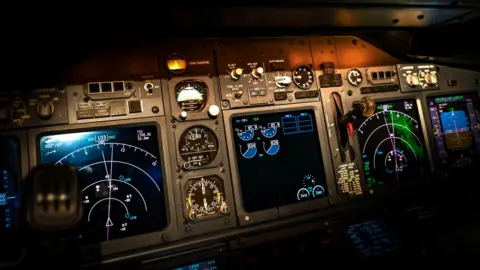The investigation into the tragic crash of Jeju Air Flight 2216, which resulted in the deaths of 179 people in December, has brought to light serious questions regarding the pilots’ actions minutes before the incident. Preliminary findings showed that the pilots managed the emergency landing with only one operational engine, the right one, which had already suffered damage from a bird strike.
Witness statements and background reports indicate that shortly before landing, the flight crew decided to shut down the left engine, which could have been the less damaged engine, rather than the right one. This critical error potentially led to the loss of essential electrical power, making it increasingly difficult for the pilots to execute a safe landing.
Data from the flight's final moments revealed that the aircraft attempted to land without its landing gear deployed. As a result, the plane skidded along the runway before crashing into a concrete barrier beyond the landing area and catching fire. Remarkably, only two flight attendants survived amidst the tragedy, with all passengers and the remaining crew members confirmed dead.
The revelations following the investigation have intensified scrutiny regarding the cockpit decision-making processes in emergency scenarios for aviation professionals. Experts familiar with the case noted that if the pilots had indeed lost visibility on their instrument displays after the bird strike, they might have struggled to accurately identify which engine required shutdown.
Joe Jacobsen, a notable expert in aviation safety, highlighted the necessity for comprehensive cockpit data to fully understand the decisions made during the flight crisis. Given the complexity of the situation, he advised caution in concluding the nature of the pilots' decisions.
This incident serves as a sobering reminder of the pivotal role pilots play in managing unforeseen emergencies and the dire implications when critical decisions go awry.
Witness statements and background reports indicate that shortly before landing, the flight crew decided to shut down the left engine, which could have been the less damaged engine, rather than the right one. This critical error potentially led to the loss of essential electrical power, making it increasingly difficult for the pilots to execute a safe landing.
Data from the flight's final moments revealed that the aircraft attempted to land without its landing gear deployed. As a result, the plane skidded along the runway before crashing into a concrete barrier beyond the landing area and catching fire. Remarkably, only two flight attendants survived amidst the tragedy, with all passengers and the remaining crew members confirmed dead.
The revelations following the investigation have intensified scrutiny regarding the cockpit decision-making processes in emergency scenarios for aviation professionals. Experts familiar with the case noted that if the pilots had indeed lost visibility on their instrument displays after the bird strike, they might have struggled to accurately identify which engine required shutdown.
Joe Jacobsen, a notable expert in aviation safety, highlighted the necessity for comprehensive cockpit data to fully understand the decisions made during the flight crisis. Given the complexity of the situation, he advised caution in concluding the nature of the pilots' decisions.
This incident serves as a sobering reminder of the pivotal role pilots play in managing unforeseen emergencies and the dire implications when critical decisions go awry.






















